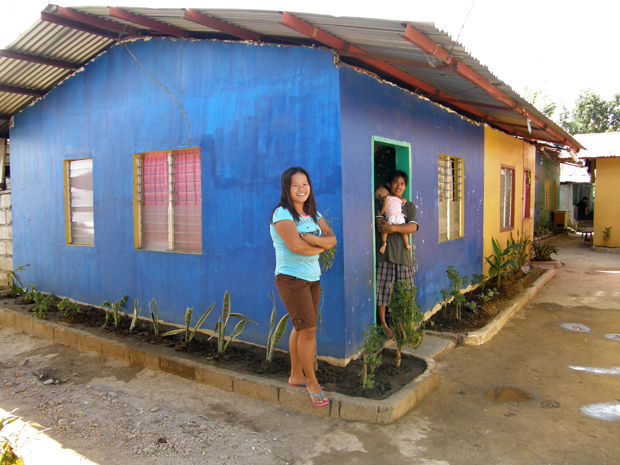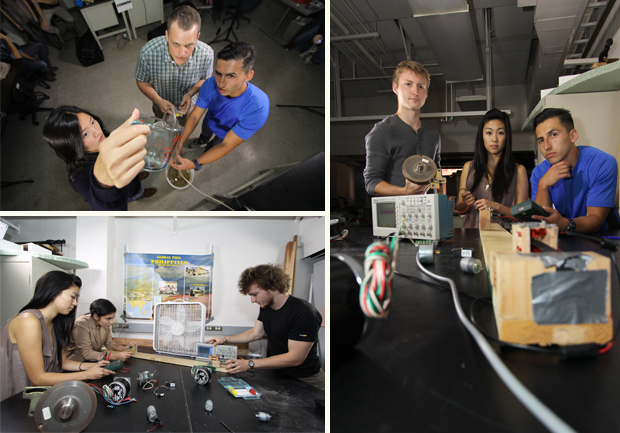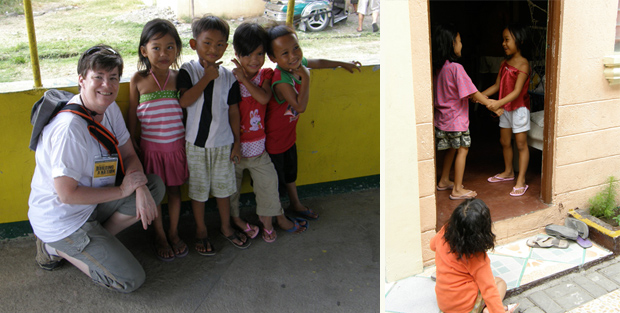
By:
- Ioana Patringenaru
Published Date
By:
- Ioana Patringenaru
Share This:
Students Use Engineering Know-how to Help People at Home and a World Away

Photo credit: Mandy Bratton
A small village in the Philippines will soon be safer from typhoons, thanks to the work of a group of undergraduates at the Jacobs School of Engineering at University of California, San Diego. They are designing a model home for the village that uses new and sustainable technologies and will make the dwelling stronger against both typhoons and earthquakes. But the students won’t stop there. They also want to provide the village with safer drinking water and renewable energy.
Other Global TIES Projects:
It’s all part of Global TIES, a program that allows undergraduates to work on ambitious projects with nonprofit organizations and government agencies throughout the world. Students are currently working with partners in Kenya, Ghana and Haiti, in addition to the Philippines. And they are developing projects right here at home, including an app that helps the visually impaired to shop for groceries, as well as hands-on experiments to teach children about the environment and ignite their interest in science, technology, mathematics and engineering. Students work under the guidance of faculty members at the Jacobs School of Engineering.
One of Global TIES’ goals is to teach students a different way of thinking, said Mandy Bratton, the program’s director and faculty advisor for the Philippines team. They learn that engineering is a tool for the greater good. “We are trying to instill the humanitarian spirit,” Bratton explained.
Several team members said they indeed have a strong sense of mission. “It’s not just an engineering program, it’s a humanitarian program,” said Kristine Carbullido, a sophomore who led the Global TIES Philippines team in fall quarter.
The program emphasizes situational leadership, Bratton said, with leadership of the projects typically rotating from quarter to quarter. “It’s a little bit like a basketball team,” she said. “Everyone is a leader when he or she has the ball.” That approach has been successful in attracting underrepresented students, especially women, as well as students from other majors.
The Philippines team is working with Gawad Kalinga, an organization that aims to end poverty in the country by 2024. To reach this goal, the nonprofit has been building communities of 30 to 100 homes to house the Philippines’ poorest residents. The Global TIES team is providing environmentally friendly and affordable technologies for these communities.
Some students on the team, including Carbullido, are originally from the Philippines and know what kind of challenges Gawad Kalinga is up against. Crystal Agoncillo, whose mother is Filipino, visited the country last summer. Observing living conditions there had a huge impact on her, she said. It also made her work for Global TIES more meaningful. She co-leads the team’s wind power efforts.
“It’s something to be proud of,” she said. “And it’s something that will improve people’s lives.”
Other aspects of the Global TIES program make it particularly exciting, the students said. It offers an opportunity to apply what they’ve learned. They become friends and have fun together. Global TIES also provides students with a real-world environment, where they work with others and deliver a final project for a client under a timeline.

Wind power as an alternative to the grid
Agoncillo and her teammates are working to harness the power of the wind to build low-cost devices made from recyclable materials that will provide electricity for developing communities in Manila and other areas of the Philippines.
These communities currently depend on the local grid, which is expensive and tends to be unreliable. To help them save money and provide them with alternative sources of power, students are currently exploring two solutions. The first is the humdinger, essentially a 1-meter (about one yard) long wind belt that draws energy from oscillations produced by a phenomenon known as aeroelastic flutter.
The belt’s oscillations when it flutters in the wind generate electricity by driving a system of magnets and a copper coil. The humdinger could produce enough energy in one month to charge a cell phone for a year, said Agoncillo, an aerospace engineering major. Humdingers can be built in array, much like solar panels.
Students also are working on small windmills powered by motors salvaged from printers and other devices. They are planning to build a bigger windmill too, powered by a motor salvaged from a treadmill. The device would power public areas of the community. Prototypes for the humdinger and the “mini-mill” should be ready soon.
Secure roofs and clean drinking water
Meanwhile, a team has been working on making homes, especially roofs, less vulnerable to damage from typhoons. The students decided to recommend the use of metal brackets, known as hurricane straps, to Gawad Kalinga, rather than building their own devices. The straps have a proven track record and are required by building codes here in the United States, said Miles Anderson, a senior and structural engineering major who leads the structures’ team. They connect a roof to a home’s walls and stay put even in hurricane-force winds. The nonprofit is set to order the straps by early this year. Global TIES students are writing up an instruction manual to help with installation in the Philippines. They have also recommended safety improvements to the design of Gawad Kalinga’s homes that will be integrated into new construction.
Finally, Sylvia Hoang, a chemical engineering major, and another group of students, are working to design a sand filter that can remove bacteria, microbes and dirt from water so it is safer to drink. They have designed a tank that resembles a water cooler that can be placed in a corner of a Gawad Kalinga home. It is equipped with a biosand filter built by the students. They are now testing the quality of the water produced by the filter.
Students on the team said they hope they will be able to travel to the Philippines to see their work in one of the Gawad Kalinga communities. They are actively fundraising and seeking donations.
“TIES is a class, it’s not just a classroom,” said Victoria Fu, a senior and chemical engineering major, who currently leads the Phillipines team. “It’s a great experience.”
For more information about Global TIES: http://globalties.ucsd.edu or contact Mandy Bratton, Director, Global TIES, mbratton@ucsd.edu

Photo credit: Mandy Bratton
Share This:
You May Also Like
Stay in the Know
Keep up with all the latest from UC San Diego. Subscribe to the newsletter today.


